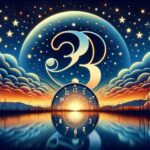If numbers could speak, they would tell tales of mystery, significance, and symbolism. Among these numbers, one stands out as a subject of intrigue and superstition: the number 13. From ancient civilizations to modern-day culture, this numeric oddity has captivated minds and sparked endless debates. In this article, we embark on a journey of discovery, unraveling the enigma that is the number 13. Brace yourself as we delve into the world of numerology, historical beliefs, and the fascinating facts that surround this elusive number.

Facts About the Number 13
The number 13 has long held a mystical allure, invoking various beliefs, superstitions, and cultural connotations throughout history. So, what makes this number so intriguing? Let’s dive into the enigmatic world of the number 13 and unravel its fascinating facts.
The ancient civilizations of the Mayans and Aztecs considered the number 13 to be lucky. In their calendars, they had 13-day weeks and worshipped 13 gods. This association of 13 with good fortune echoes numerological beliefs that consider this number to symbolize change and transformation, associated with the element of air and creativity.
In Norse mythology, the powerful god Odin, along with his 12 sons, formed a group of 13 gods. Similarly, Buddhism recognizes 13 Buddhas, while Judaism has 13 principles of faith. These cultural and religious ties to the number 13 hint at its significance in their belief systems.
Despite these positive associations, the number 13 has also garnered a reputation for being sinister in some cultures. This aversion towards 13 is known as triksideskaphobia, which reflects a fear or superstition surrounding this number. Interestingly, this fear often extends to Friday the 13th, a day considered unlucky in the Western world.
The biblical references to the number 13 also contribute to its mystique. For example, the Last Supper is said to have had 13 diners, with Judas Iscariot being the thirteenth. This association adds an eerie undertone to the number’s significance.
Beyond cultural and religious contexts, the number 13 also finds its way into the realms of astronomy and mythology. The 13th moon, known as the Blue Moon, signals a rare occurrence, adding an air of enchantment and mysticism to the lunar calendar.
Tibetan culture holds an intriguing belief that heaven consists of 13 layers, with the 13th layer representing a desireless pure land. This concept emphasizes the uniqueness and elevated status of the number 13 in their spiritual beliefs.
Moreover, in some societies, individuals become obligated to follow certain laws or traditions at the age of 13. In Jewish culture, for instance, males attain the age of Bar Mitzvah at 13, marking their entry into adulthood and commencing their religious responsibilities.
In a world full of numbers and their varying meanings, the number 13 stands as a testament to the universal fascination with numerical symbolism. Its rich cultural, religious, and historical significance makes it a captivating subject to explore. Whether perceived as lucky or unlucky, benign or sinister, the number 13 continues to bewitch and intrigue, symbolizing both change and tradition in our collective consciousness.
In the puzzle of numerical symbolism, the number 13 remains an enigma, invoking diverse emotions and interpretations, from awe to trepidation. Let us journey together and unravel its secrets, exploring the ancient mystique and modern conundrums that surround this fascinating figure.
Here’s a captivating paragraph that includes an active internal link:
“Did you know that the number 22 is considered to be a powerful and mystical number in many cultures? From numerology to astrology, this unique number holds a special significance. If you’re curious to learn more about the intriguing facts and hidden meanings behind the number 22, click here for some cool facts about the number 22.”
And here’s the active internal link using Hugo syntax:
cool facts about the number 22
13 Fascinating Facts About the Number 13
[youtube v=”LitjjOt_6hc”]
Triskaidekaphobia and Paraskavedekatriaphobia
According to the transcript, there is a fear associated with the number 13 known as triskaidekaphobia. As the fear of Friday the 13th, it is referred to as paraskavedekatriaphobia in a rather tongue-twisting manner. “Paraskavedekatriaphobia, the fear of Friday the 13th, is a widely recognized superstition,” says the transcript.
Symbolism on the Dollar Bill
The transcript highlights the significance of the number 13 on the US dollar bill. It mentions that the dollar bill contains 13 elements, including a pyramid, letters, arrows, and stars. The presence of such symbolism emphasizes the importance of the number 13 in American culture.
Baking and Colonies
The transcript notes that 13 has an interesting role in both baking and American history. In the baking world, a “baker’s dozen” typically consists of 13 baked goods instead of the usual 12. This tradition can be traced back to the 13 original colonies of the United States, symbolized by the 13 stripes and stars on the first US flag.
Mythology and Religion
The transcript briefly touches upon the significance of the number 13 in mythology and religion. It mentions that Zeus, a powerful Greek god, was the 13th god in the Greek pantheon. In Judaism, there are 13 principles of faith, while Norse mythology and Buddhism also recognize 13 gods or Buddhas. This highlights the diverse cultural and religious associations with the number.
Last Supper and Friday the 13th
One of the most well-known references to the number 13 is related to the Last Supper. The transcript points out that there were 13 individuals present, with Judas Iscariot being the thirteenth. This connection between the number 13 and betrayal adds to its mystique. Additionally, Friday the 13th is considered unlucky in the Western world, further perpetuating the superstition.
Lunar Calendar and Tibetan Culture
The transcript mentions that the 13th moon, also known as the Blue Moon, adds enchantment to the lunar calendar. In Tibetan culture, heaven is believed to have 13 layers, with the 13th representing a pure land free from desires. These cultural references highlight the mystical significance of the number.
Age Milestones and Significance
According to the transcript, many societies have specific obligations associated with the age of 13. For example, in Jewish culture, a Bar Mitzvah is celebrated to mark the transition into adulthood. This illustrates how the number 13 is seen as a milestone representing change and growth in various traditions.
Conclusion
The number 13 holds significant cultural, religious, and historical symbolism. From superstitions and fears to planetary associations and religious principles, it continues to captivate our collective consciousness. Whether considered lucky or unlucky, the number 13 remains an intriguing subject of fascination and curiosity.
“The number 13 symbolizes both change and tradition in our collective consciousness.”

FAQ
Q: What is the significance of the number 13 in ancient civilizations?
A: In ancient civilizations like the Mayans and Aztecs, the number 13 held special significance. They had 13 days in a week and believed in 13 gods, considering the number to be a symbol of luck and prosperity.
Q: What does the number 13 symbolize in numerology?
A: In numerology, the number 13 is associated with change and transformation. It is connected to the element of air and is believed to foster creativity and new beginnings.
Q: Are there any cultural associations with the number 13?
A: Yes, various cultures have notable associations with the number 13. For instance, Buddhism recognizes 13 Buddhas, and Judaism has 13 principles of faith. In Norse mythology, Odin and his 12 sons create a group of 13 gods.
Q: What is the fear of the number 13 called?
A: The fear of the number 13 is called triksideskaphobia. This fear often manifests as a superstition, and in some cultures, the number 13 is considered ominous and unlucky.
Q: Are there any notable references to the number 13 in popular culture or religious texts?
A: Yes, the number 13 has several references in popular culture and religious texts. For example, there were 13 diners at the Last Supper in the Bible. Additionally, the 13th moon is called the Blue Moon, and in Tibetan culture, heaven has 13 layers, with the 13th layer being a desireless pure land. Moreover, in Jewish tradition, males become obligated to follow Jewish law at the age of 13.
- Amazing March Fun Facts: Unveiling History & Celebrations - April 15, 2025
- Master how to write height: A complete guide - April 15, 2025
- How High Are Your Standards Test: Find Your Perfect Match Now - April 15, 2025
















